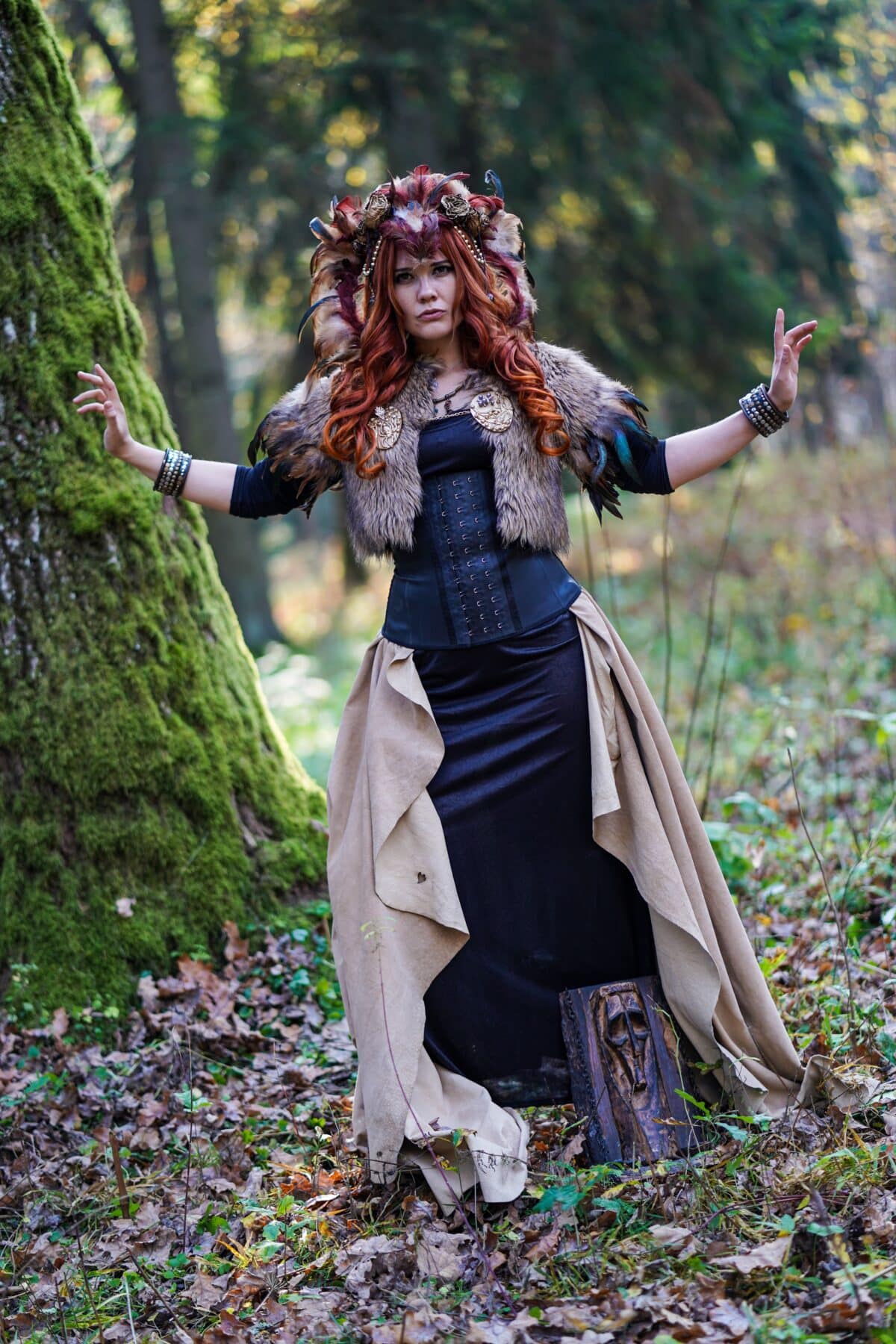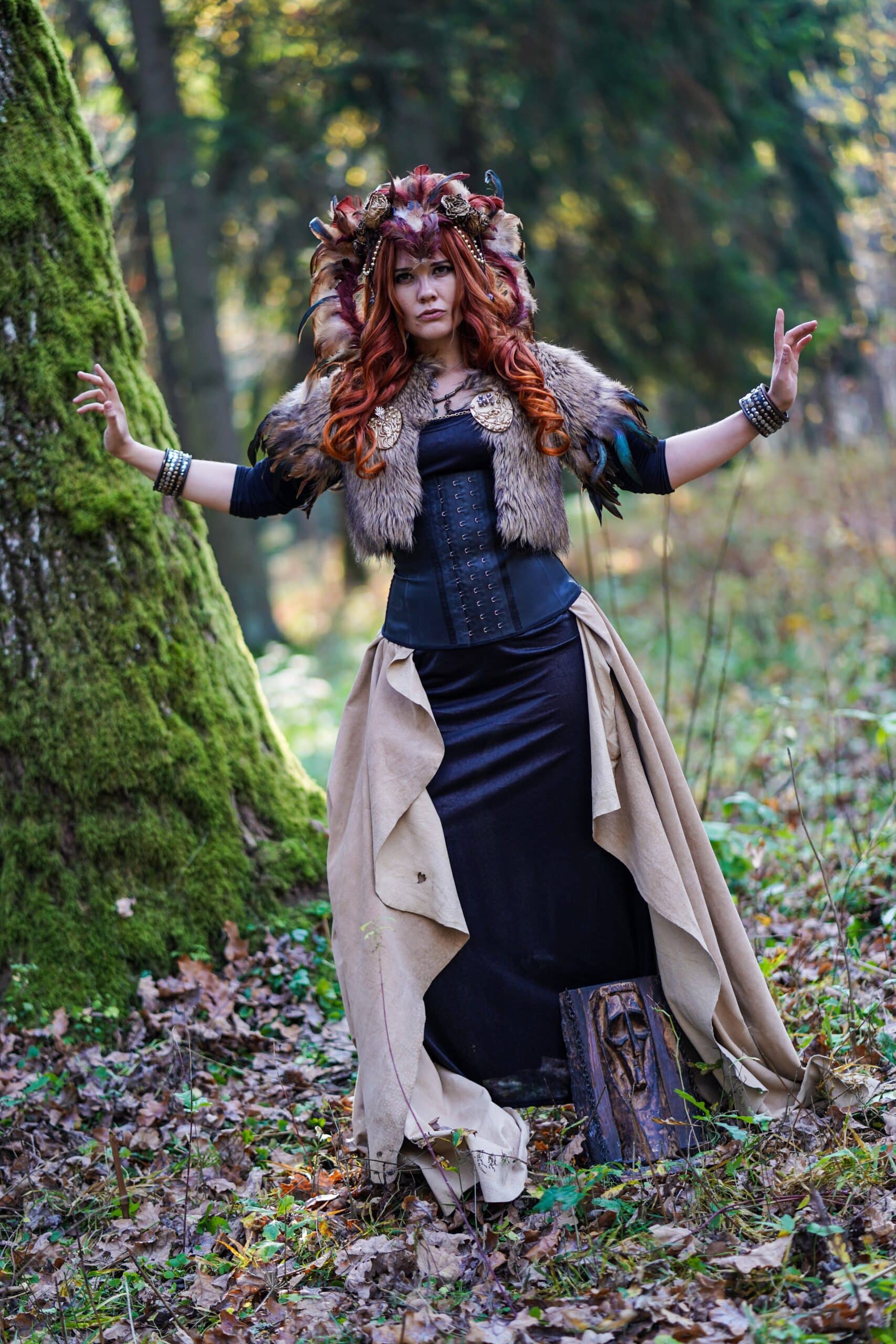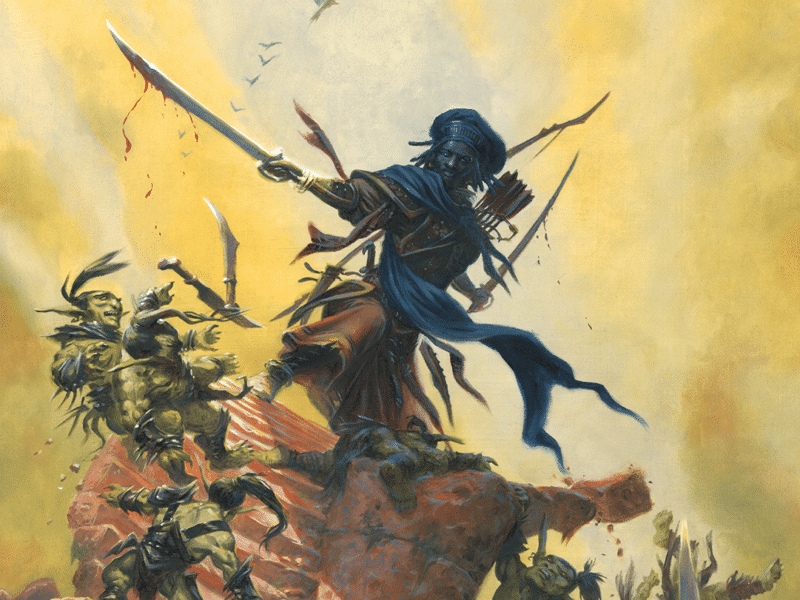Dungeons & Dragons is all about playing a fantasy character who is faced by untold horrors and dangers, overcoming them all, and returning back home to your favourite inn with sacks brimming with lots of lovely loot. Your character will belong to one of the classic classes in D&D, such as the wizard or the barbarian, which means they’ll have special abilities and tricks up their sleeves (or bracers) that let them bring something special to the table when combat inevitably erupts.
The fundamental rules already offer lots of options that allow you to make a unique character. For example, there are dozens of different feats to choose from and a plethora of various spells available. There are also endless types of equipment and magic items that can further make your character fun to play and stand out from other characters or NPCs of the same class. And that’s not even mentioning all the fun you can have with detailed clothes and, of course, your character’s character – how they act, reason, speak, fight, and so on. You can also multiclass, which means combining two or more standard classes – a neat way to create curious characters.
However, recent versions of Dungeons & Dragons feature a subset to the classes that unlock a ton of opportunities to come up with customised characters: the subclasses. These are subtle (or, sometimes, not so subtle) variations of each class and they often serve as a foundation for making an archetypal fantasy figure. For example, there’s the assassin who specialises in dealing death from the shadows, there’s the holier-than-absolutely-everything paladin, and the frothing, rampaging barbarian who is destined to wreak havoc on all carefully laid battleplans.
As you can expect, each subclass has been discussed online at length since the advent of the internet, and a quick search shows that there’s an unofficial consensus as to which subclass is the most effective – that is, tactical and deadly – and which ones that are the weakest. Now, creating a hyper-efficient character that is optimised in every way and excels in dishing out damage is all good and well. It’s even recommendable if you’re taking part in competitive play (or if your Dungeon Master likes to throw serious challenges at your group).
However, it means following a pre-existing template with little room for nuance or variation, and it can also result in class-and-weapon-combinations that make one’s imagination hurt. In other words, it could mean that you miss out on what this particular writer considers to be one of the best things about D&D: playing a fun character!
Creating a truly enjoyable character means letting your imagination run wild and going with a person (and a persona) that you really want to enact, which often requires a mix of many different things and choices. But this can be a real challenge! In fact, it’s pretty common not to be sure exactly what type of character one wants to play, especially if one needs to create one fast.
This brings us back to subclasses – because they provide superb springboards for ideas and inspiration. What’s more, some of them are inherently fun – or so we think! – and need next to no changes at all to be excellently amusing right away. So hold on to your scabbards and throw all thoughts of optimisation out the window as we dive into the rules and explore the most entertaining subclasses in D&D!

(Photo credits: Dmitry Vechorko, Unsplash)
Eldritch Knight
This Fighter subclass is the undisputable epitome of fantasy. Picture a heavily armoured warrior who strikes a pose standing on a pile of skulls belonging to defeated enemies, holding a mean-looking sword in one hand while flames rise from the other hand. That’s the eldritch knight! Packing a stylish blend of martial and arcane abilities, they’re the bringers of ultimate coolness to any adventuring party – and they look amazing on the cover of heavy metal albums, too. In essence, they are made to rise through the levels like souped-up rockets and rule vast kingdoms with their jagged swords and burning gauntleted fists. It doesn’t hurt that they can grow to be very dangerous, too. Unless they’re defeated by a goblin at level one, of course. (A hint: if you want to combine magic abilities with melee skills but are more interested in grace and sophistication, you’re looking for a Bladesinger – they’re cool too, but not covered here!)
College of Eloquence
If you’re a player who likes banter, and happen to play a bard, this subclass is sure to entertain. While other minstrels and musicians run around with brittle instruments and pester people with their incessant singing, you just talk. But by the gods, you can really talk! Whether you’re a bona fide motormouth or the quiet type who chooses their words with the utmost care, every sentence you utter is sharper than a dull blade. Are your friends worried? You can reassure them with a quick speech. Does the group need to arrange a meeting with the city’s elusive mayor, or explain to the town guard why you happen to have your pockets full of gems? Stand back, everyone – you got this. Will your tongue get you in trouble? Almost definitely – but that’s part of the joy of this subclass!
Great Old One patrons
The great old one patron is an option that’s often overlooked as it doesn’t make for the most effective combat choices. So if you’re a player who just wants to hammer your opponents with eldritch blast, stop reading and skip to the next paragraph. But for those who like mystique and eeriness – and to really freak their fellow players out – keep reading, because this one’s for you. In short, a great old one patron is a being, or perhaps rather an entity, from the far realm. That is, they’re sentient things that reside in a dimension so utterly bonkers, twisted and generally indescribable that it isn’t included among the “normal” dimensions that are found beyond the material plane in D&D. A warlock with a patron of this kind commonly has a penchant for tentacles, goo, additional eyes, and bouts of madness – but also serious secrecy, unpredictability, and hidden agendas. Other characters (and their players) tend to tread very lightly around these warlocks as no one really knows what they’re up to – and absolutely no one wants to enrage them, in case their patron will intervein in some spectacularly nasty fashion.
Swashbuckler
There’s a very straightforward way to paint a picture of the kind of swashbuckler I have in mind: if you have seen The Princess Bride, think Inigo Montoya. (If you haven’t seen it, what are you still doing reading this article? Look it up and rent it – now.) In short, swashbucklers are charismatic, elegant, and tremendously good at their weapon of choice – or at least, they always believe that they are! This is the character that beams with confidence, literally swings from the chandeliers, and never backs down from a fight (unless they do, in which case they always have a good excuse at hand). For a quick way to an instantly entertaining but potentially short-lived character, choose this subclass and off you go!
Thief
What’s so special about a thief, you may wonder? I’m glad you asked, because this rogue subclass is ripe for taking everyone in the adventuring party on a rollercoaster ride (while squirrelling away their coin). Assassins may be great at discreetness, and Arcane Tricksters might impress with their spells. You, however, are far from some average pickpocket – on the contrary, you’re a veritable whirlwind of clever moves. The key here is in some of the subclass’s special abilities. Most prominently, Fast Hands is phenomenal for causing all kinds of delightful trouble as it allows you to steal objects and manipulate your surroundings as a bonus action. In other words, with your DM’s permission, you can create totally merry mayhem, even (and most importantly) during frantic combat. Then there’s Use Magic Device, which lets you use magic items that aren’t meant for you. The colossal and beautiful disasters that you can trigger through this ability defeat all attempts at describing.
Cavalier
Aha! So you thought that paladins were the ones who were the best at riding gloriously into battle at the front of armies (or small adventuring groups)? Think again, because the cavalier – a fighter subclass – takes the price when it comes to mounted (and maddened) combat. This is the option if you fancy thundering headlong into the fray on horseback while bashing foes over their heads as if it were going out of fashion. Their special abilities speak for themselves: Born to the Saddle means you’ll stay on your mount no matter what happens (well, at least most of the time), and Ferocious Charger lets you gallop right into a desired target and (hopefully) knock them prone. But best of all are Unwavering Mark and Hold the Line, which allow you the formidable pleasure of locking down enemies and using reactions to bash them if they have the audacity to attack anyone but you. Your party will love you and your antagonists will loathe you. What more can an adventurer wish for?
Oath of the Crown
At a glance, this subclass might look impossibly boring or even cliché. Those who are sworn to this oath care primarily about law, loyalty, courage, and responsibility. As you can tell, it essentially turns paladins, most of whom already are painfully pleasant and golden-hearted, into ultra-paladins with ideals so lofty they have fluttered into the sky and out of sight on their celestial wings. And this is completely true. The trick to make them entertaining is, of course, to dial up their super-niceness and chivalry to eleven – and then some. Forget white lies and cunning plans: this character strides up any problematic creature, be it a drunken gnoll or a raging dragon, and requests a civil conversation with the offender. After all, there is a little good in everyone, and only as a last resort do you draw your well-polished sword (they aren’t totally adverse to violence, they’re just very civilized). And the glee doesn’t end after the combat is over! Does everyone have to take turns standing guard around the campsite? Not when you’re around! You take triple shifts, march tirelessly around the perimeter, and sound a fanfare at the first sight of light. Throw in an upbringing that leaves your character totally hapless outside of a lavish court for some extra entertainment.
Twilight Domain
This cleric subclass is truly a peculiar one. When I first read about it, I couldn’t make heads or tails of its theme – which, as its name suggests, is twilight. A subclass about sunset, rather than light or darkness? A set of abilities built around…dusk? It was quite confusing. My impression was that the subclass was a catch-all container for cool but disconnected ideas that related to looming darkness or impending night, until someone suddenly said “wait, we’re on to something here.” This might explain why I have found myself returning to the concept many times. Personally, I think that there’s a specific reason why I like it so much: what this subclass has in spades is stylishness. It truly puts the “class” in subclass! You can see into darkness farther than most other creatures (300 feet), you can emanate a sphere of healing gloom, you learn to add divine damage to your attacks – and you develop the ability to walk on the air when you’re in a space with deep shadows. Oh, and you have full skills with martial weapons and heavy armour skills, too. If you ever long to play an enigmatic hero who looks and behaves as if they have walked straight out of a Sandman graphic novel, this is definitely your pick. Don’t forget to buy the most stylish and dark suit of armour that the local armourer has in stock.
This completes the list of enjoyable (again, not necessarily effective or lethal) subclasses! So next time you’re rolling a new character, leave the overpowered custom builds to someone else, and go for the riveting type of hero that your heart tells you to play.







